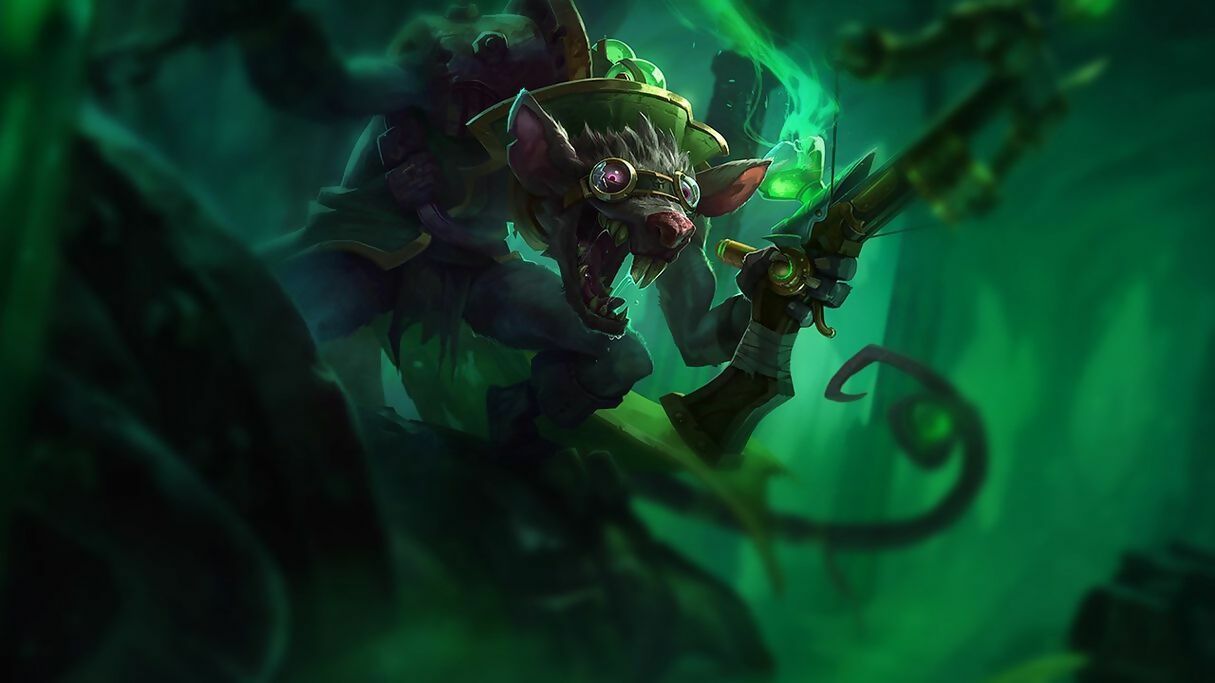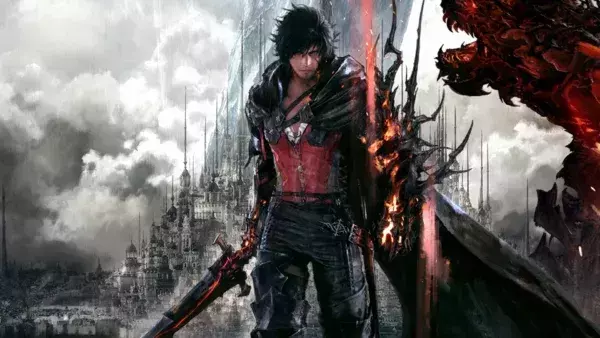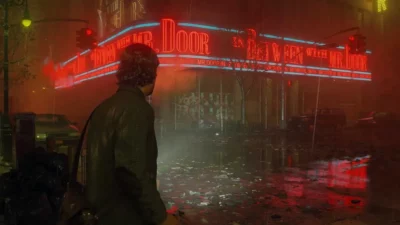
From a staple enemy of fantasy RPG, to the visceral hordes of narrative-driven games, rats are frequently depicted as evil. But what does that evil amount to? Why are rats the perfect enemy? Or are they even enemies at all?
I remember my first encounter with video game rats – in 2001’s Max Payne there’s a subway level, where if you throw a grenade into a rathole, you will be granted an extra objective stating, ‘I have declared war on the rats’. The rodents will arm themselves with Desert Eagles, and proceed to enact their revenge on the gurning detective. It’s a weird Easter egg, but ‘killer rats’ is actually pretty on-point in reflecting the way we view rats in games. In the years that followed, I covered myself in rat blood in Dragon Age, farmed rats for humanity in Dark Souls, and committed single-handed genocide in Vermintide – all without ever really thinking about it.
That’s probably why rats are such great enemies – our cultural distaste for them runs so deep, that in our minds they easily occupy the position. We tell stories about rats doing evil things – in The Witcher 3, it’s a paralysed nobleman’s daughter being eaten alive, in Dishonored, a city of rat bites and body bags. But who’s to blame in those stories? What’s far more interesting about video game rats is their ability to be both an enemy, and somehow occupy a position of blamelessness. They only act according to their nature. But that begs the question: in human terms, is their nature evil?

The rats of Dishonored share an affinity with all those who have touched the void.
The Plague
One of our oldest negative associations of rats relates to the Black Death, the period of plague during Medieval Europe, which they were originally blamed for. A Plague Tale: Innocence is a game which seeks to exaggerate that story for the purpose of the in-game experience – creating a plague of rats more akin to folk-tale than a historically accurate depiction. As creative director on the game, David Dedeine says, “We have been warpers of history!” The result of this so-called warping is, however, pretty terrifying. To experience one of A Plague Tale’s rat-swarms is to witness a nightmare. “It speaks directly to the reptilian brain, your body actually reacts to it,” Dedeine jokes. “The brain can’t describe it, that’s what makes it scary.”
Staring into the writhing, red-eyed mass of rodent bodies, pouring from the walls, and through cracks in the floor, I’m inclined to agree with him. But part of what also makes them scary, is that they’re always present. “It’s like the shark in Jaws,” Dedeine explains. “When you’re on the surface of the sea, you don’t know where the shark is. Rats are the same.” We all know the urban myth, that in a city you’re never more than two metres away from a rat – A Plague Tale effectively creates the mechanical version of this. As Dedeine says: “Every single hole in the wall can begin to tell a story.”

David Dedeine speaks about game design like alchemy, reflecting a creative process that relies more on instinct than exact science.
Another reason A Plague Tale’s rats are terrifying is because they cease to be individuals – in their uncountable swarms, they represent only a unity of hunger. But is hunger evil? Smash a guard’s lantern with main character Amicia’s sling, and they’ll be eaten, but drop a ham into the swarm and the rats will devour it with the same glee. There is an equality to the rats’ unscrupulous hunger, which makes it hard to blame them. Especially when throughout the game you’ll witness such conscious evil acts – people being burned at the stake, battlefields littered with corpses, and more murders than you can count.
Rats feed on evil – it’s one of the main reasons our society hates them. They act as a mirror, their prevalence a directly linked reminder of our own evil acts. In A Plague Tale: Innocence, Amicia and her young brother Hugo are the innocent party traversing a brutal world; but I’m starting to think that perhaps rats too are innocent in their own way.

The behaviour of the rats is exaggerated by what Dedeine refers to as “an alchemical imbalance”.
The Villain
In the world of Warhammer Fantasy, another interesting depiction can be found – the Skaven, a race of villainous sentient rats modelled almost directly upon our negative cultural associations. All you need do is look at their clans to realise this – Clan Pestilens, based on our association between rats and plague; Clan Eshin, on the idea that rats are sneaky and treacherous; Clan Skryre, twisting our idea of lab-rats; and Clan Moulder, playing on our disgust at rat survivability.
The Skaven are essentially cartoon villains, caricatures, and their society, a hierarchical, self-cannibalising monster, that just won’t stop growing – in many ways they’re the perfect antagonist. The Vermintide games sought to take advantage of this – four heroes facing off against tides of ratmen, slashing and bludgeoning in a horde-killing frenzy. But the majority of the rats you kill in the game are Skavenslaves, the lowest strata of rat society – ignorant creatures, riled into a frenzy and let loose. You rarely kill the masters, the Warlords and Grey Seers pulling the strings. So it begs the question, are Skaven evil by nature? Or are they merely victims of their society?
Anders De Geer, game director on Vermintide, knows the answer. “A Skavenslave is just a Warlord that hasn’t found a way to climb or back-stab his way to the top yet. They are egocentric, greedy, envious, unloving, cowardly, power-hungry, ruthless creatures.” The anthropomorphic quality of the Skaven is one of their most interesting aspects – it’s in the name: ratmen. But which part is rat? Which part is man? De Geer insists that what is worst in them comes from us. “Skaven are not supposed to be rats acting like humans, but rather humans acting like rats.” Just as in A Plague Tale, we see how rats can act as a mirror for “mankind’s worst characteristics”, as De Geer phrases it.
While it’s absurd to compare Skaven to humanity, it does draw some uncomfortable parallels. As De Geer says: “I think the main reason Skaven commit their worst atrocities against themselves, is that they live among other Skaven.”

Anders De Geer talks with a profound love of Warhammer Fantasy, evident in Vermintide’s lore-inspired game design.
The Victim
Dishonored has always been a game series about victimisation – its protagonists stripped of their finery and cast into the gutter, alongside the rats and plague victims. It fosters an almost sympathetic alignment with rats, which – while dangerous – become circumstantial allies. Through its Chaos system, Dishonored shows an awareness that rats merely feed upon evil – the more bodies you leave in your wake, the more rats will appear, and the more the plague will spread. It’s easy to see Dishonored’s rats as evil at first, but in revealing that the Lord Regent displaced them and brought them to the city, we realise they’re merely an unsuspecting aspect of his evil schemes.
This changing perspective becomes its most interesting in Dishonored: Death of the Outsider, a game which allows you, through dark magic, to hear rats speak. Hazel Monforton was a narrative designer on the game, and wrote many of these ‘rat-whispers’. “We all deeply loved the idea of hearing the rats’ inner thoughts for the first time in the series,” Monforton explains. “They want to live, to be safe, to be fed, to have sex, to take care of their children. They have emotions, and relationships, and even an oral history.”
One of the most powerful parts of this animal perspective is that they speak in the voice of a young girl, Deirdre, protagonist Billie Lurk’s childhood sweetheart. “The voice stresses that the rats are very small, very weak, and very childlike themselves. They come from a hostile environment that is stacked against them,” Monforton says. “In particular, the blood-curdling scream when the rats are harmed or frightened is very affecting. I know some fans reloaded earlier saves after doing that because they felt so guilty.”
Billie Lurk also represents a unique perspective to empathise with the rats. “She is from the street and the city in a way that Corvo and Emily are not,” Monforton explains. “She grew up in poverty, watched the rich destroy her life and loved ones, became a killer on behalf of others, and lived in the abandoned, filthy, and secret places of both Dunwall and Karnaca. The rats are a smaller reflection of Billie’s same themes. Their lives are intimately intertwined.”

Hazel Monforton, having written a thesis on collective violence in 20th-century literature, truly understands the victims of Dishonored.
This familiarity and insight into the rats cast them in a completely new light – they become living inhabitants, victims of the city in much the same way as any other, exultant in pleasure, and despairing in pain. It is the counterpoint to A Plague Tale’s depiction – a rat as a thinking, feeling, individual creature, defined by more than just hunger. It is also a far cry from Vermintide’s anthropomorphic depiction of rats as a vehicle for the negative characteristics of humanity.
“This is our baggage, not theirs,” Monforton explains. “At most, rats are reactive to humans and how we choose to live. They follow us wherever we go, whether into cities or across oceans. They are associated with the death and decay that humans create, and so rats are burdened with our own guilt-ridden symbolism.”

Sometimes it’s a combo, like the not-so-humble Mole Rat of Fallout fame.
In more ways than one, they are our victims, and in terms of design, it’s easy to see why they infest our games. Rats are enemies of convenience. As De Geer explains: “The Skaven gave us a great opportunity to push as many enemies as we could on screen at the same time.” Dedeine echoes this same thought: “It was the easy part. You can find an algorithm on the internet, and very quickly, you can see lots of rats.” Both Vermintide and A Plague Tale: Innocence use rats and their associations to create uniquely visceral experiences, filling players with horror and disgust. But sometimes it can also be good to look out beyond the revulsion, beyond the plague, the blood, and the hunger, to appreciate the reality of a living creature, which has inspired so much in gaming.





